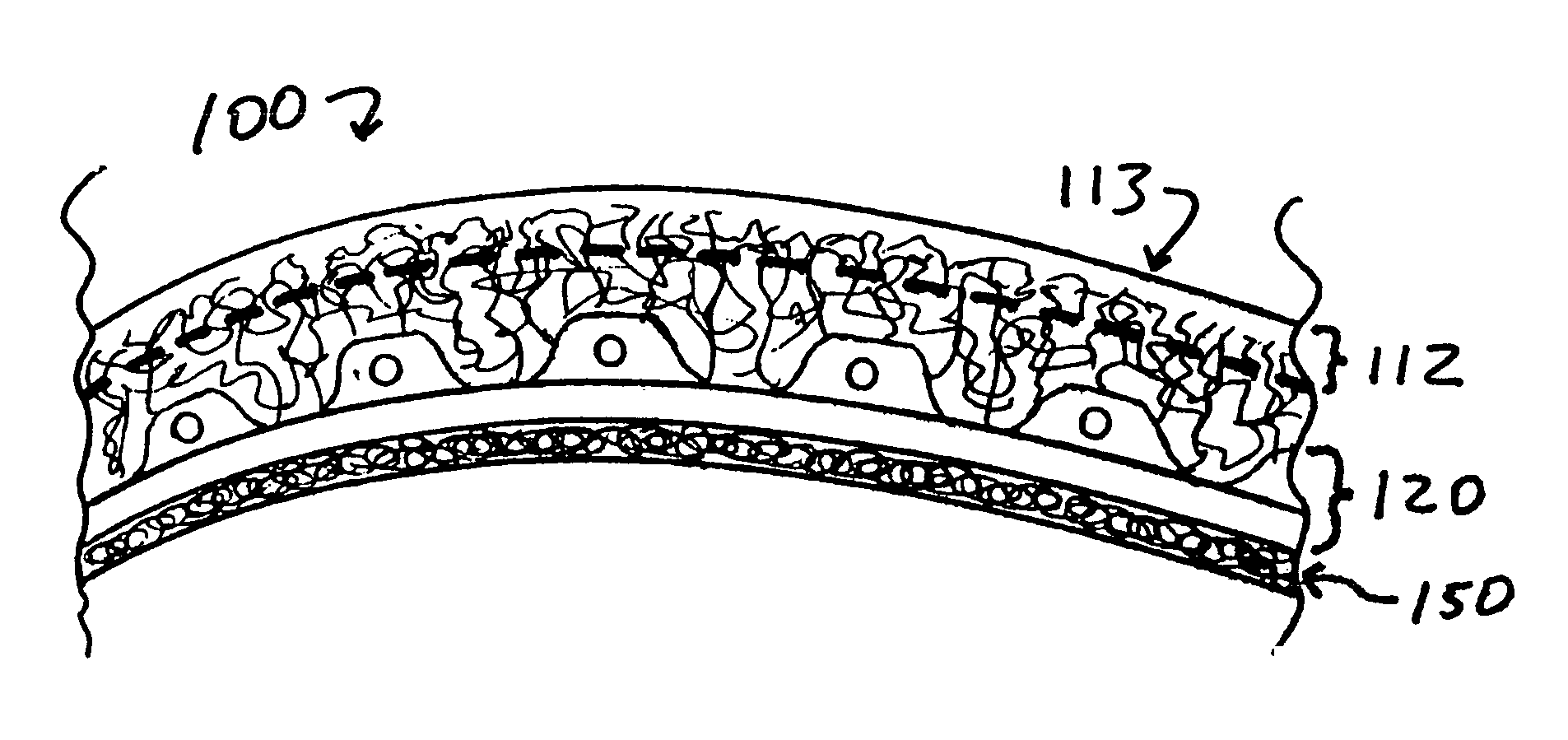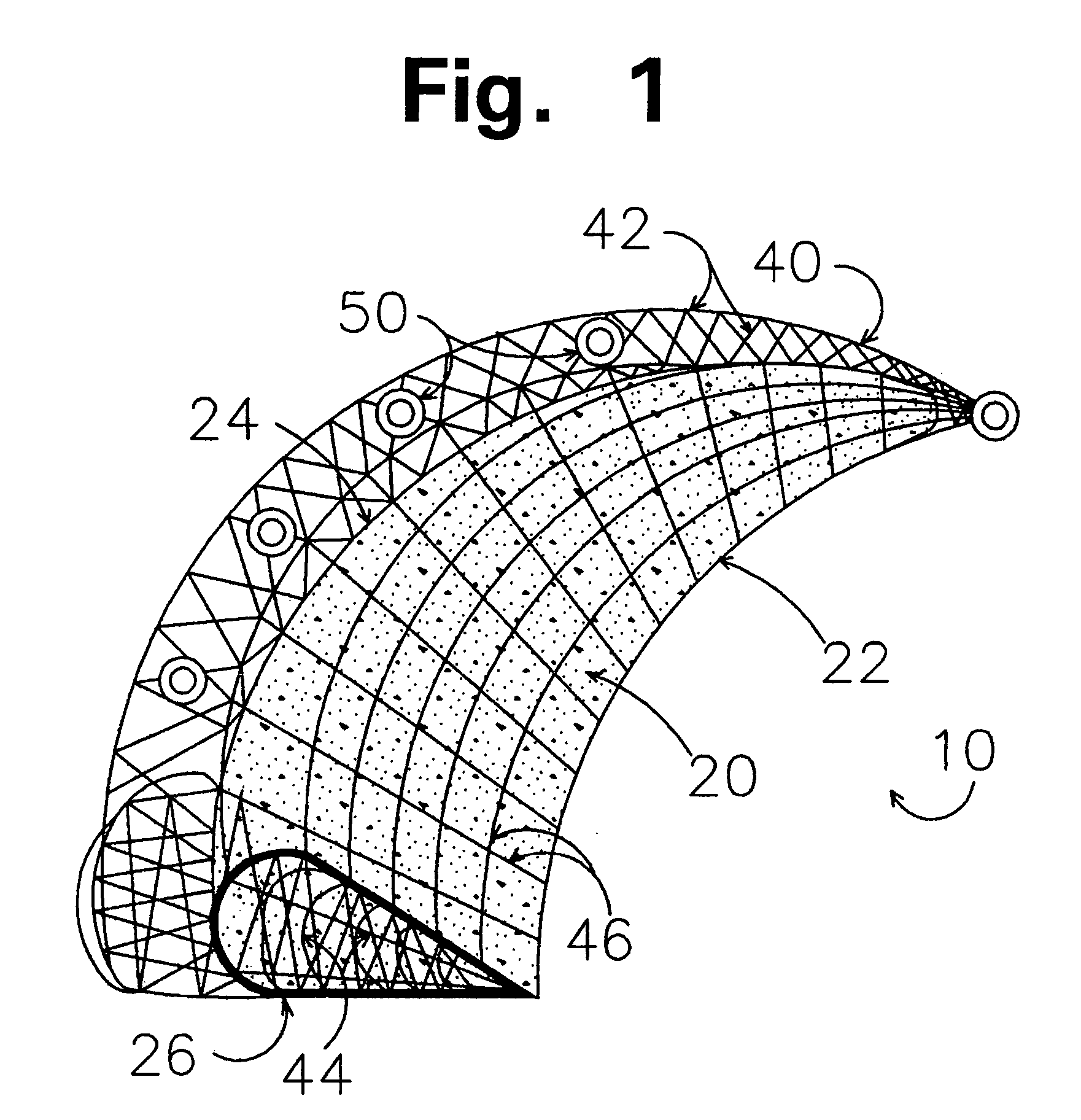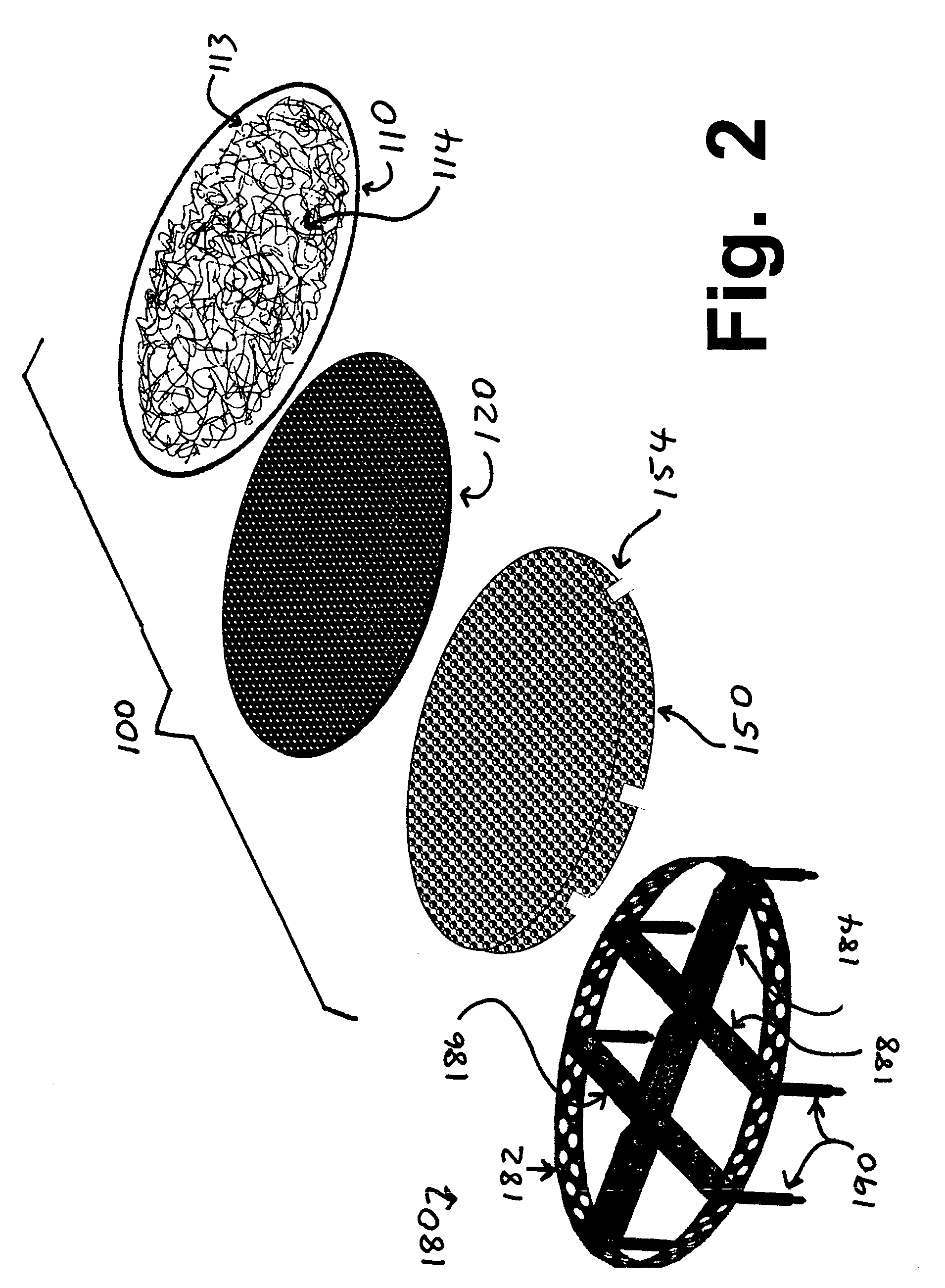Implants for replacing cartilage, with negatively-charged hydrogel surfaces and flexible matrix reinforcement
a hydrogel and cartilage technology, applied in the field of surgical implants, can solve the problems of insufficient strength and durability of phema, inability to see under light microscope, and inability to maintain phema for years (or decades), and achieve the effects of strong and durable, strong and secure anchoring of the hydrogel implant, and promoting tissue ingrowth into the implan
- Summary
- Abstract
- Description
- Claims
- Application Information
AI Technical Summary
Benefits of technology
Problems solved by technology
Method used
Image
Examples
example 1
PVA-PVP Copolymer Samples
[0200]Granular PVA (grade 71-30, with an average molecular weight of about 140 kilodalton) was supplied at no cost by DuPont. PVP (average molecular weight about 40 kd) was obtained from Sigma Chemical. These were mixed together at a ratio of 99% PVA and 1% PVP, by weight, with a total polymer weight of 10% w / v in distilled and deionized water. The mixture was stirred for 20 minutes, by which time the solution appeared to be completely uniform and consistent. It was heated to 85° C. overnight, then cooled to room temperature, and stirred again for 20 minutes.
[0201]An aliquot of this solution was poured into a shallow flat mold, which was then kept in a warm ventilated incubator at 37° C. until essentially all water had been removed, leaving a polymeric sheet with a thickness of about 1.75 to 2 mm. This usually took about 4 to 5 days.
[0202]A punch was used to remove circular samples, usually with 0.67, 1.5, or 1.625 inch diameters, depending on the tests that...
example 2
Polyacrylonitrile Samples
[0208]Sample sheets of polyacrylonitrile, 2.55 to 2.6 mm thick, were provided by the PragTech company (Flemington, N.J.). These sheets were of a type designated as “Qpan” by Pragtech. The exact details of the process use to manufacture the “Qpan” class of PAN are proprietary, and may be covered by one or more currently pending patent applications (including U.S. application Ser. Nos. 09 / 383,020 and 10 / 193,578, both by Stoy et al and accessible on the U.S. Patent Office website). Methods for manufacturing polyacrylonitrile are disclosed in various patents that can be located by searching for “Stoy” as the inventor, in the U.S. patent database (www.uspto.gov). Such US patents range from U.S. Pat. No. 4,107,121 (“Ionogenic hydrophilic water-insoluble gels from partially hydrolyzed acrylonitrile polymers . . . ”) to U.S. Pat. No. 6,593,451 (“Method of processing polyacrylonitrile”), and include 14 additional patents in between those two. U.S. Pat. Nos. 3,895,169...
example 3
Standardizing Tests on Tribometer
[0210]Before the tribometer (made by AMTI, www.amtiweb.com, and connected to a desktop computer using AMTI software) could be used for testing hydrogels, it had to be standardized, which is comparable to calibrating it. This is done using the procedures set forth in ASTM protocol F732 (“Standard Test Method for Wear Testing of Polymer Materials Used in Total Joint Prostheses”).
[0211]Briefly, the tribometer machine is used to rub pins having smooth, flat-faced surfaces made of a known type of plastic, called “ultrahigh-molecular-weight polyethylene” (UHMWPE), against smooth disks made of a very hard cobalt-chromium alloy (supplied by Biomet Inc., www.biomet.com). Prior to the tests, the pins (having 0.5 inch diameters for the standardizing tests) were pre-soaked in distilled water for a month, to minimize fluid absorption during the test. A load of 253 newtons was applied to the pins, to generate an average contact stress of 3.54 megapascals (Mpa). Th...
PUM
| Property | Measurement | Unit |
|---|---|---|
| thickness | aaaaa | aaaaa |
| thickness | aaaaa | aaaaa |
| temperature | aaaaa | aaaaa |
Abstract
Description
Claims
Application Information
 Login to View More
Login to View More - R&D
- Intellectual Property
- Life Sciences
- Materials
- Tech Scout
- Unparalleled Data Quality
- Higher Quality Content
- 60% Fewer Hallucinations
Browse by: Latest US Patents, China's latest patents, Technical Efficacy Thesaurus, Application Domain, Technology Topic, Popular Technical Reports.
© 2025 PatSnap. All rights reserved.Legal|Privacy policy|Modern Slavery Act Transparency Statement|Sitemap|About US| Contact US: help@patsnap.com



